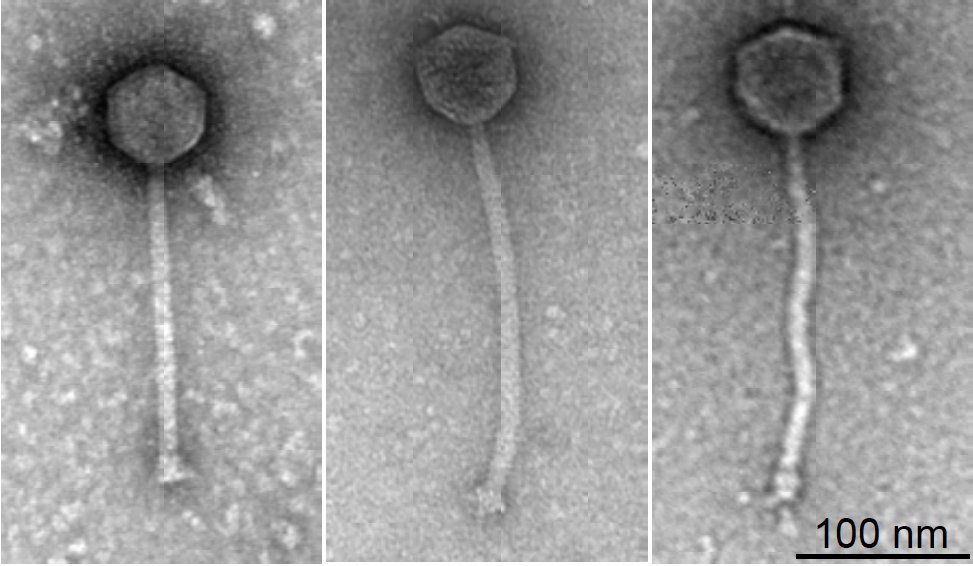In a first, engineered phages used to treat teen’s mycobacterial infection
Establishing several firsts, a hospital in London used genetically engineered bacteriophages to successfully treat a teenager’s extensively drug-resistant mycobacterial infection following a double lung transplant for cystic fibrosis, researchers said.
The patient, a 15-year-old girl, was chronically infected with Pseudomonas aeruginosa and Mycobacterium abscessus and had been taking antibiotics for 8 years. In the weeks and months following the transplant, signs of infection appeared at the incision site and elsewhere. Nodules appeared in numerous places on her body, and doctors diagnosed her with a disseminated M. abscessus infection that was resistant to traditional antibiotics, according to Graham Hatfull, PhD, professor of biological sciences and biotechnology at the University of Pittsburgh, and colleagues.
“There are few strategies for controlling infections caused by bacteria that are highly resistant to antibiotics. The therapeutic use of phages is one strategy, but there are few well-documented examples, and none to treat infections with these types of bacteria,” Hatfull told Infectious Disease News. “We report the first use of phages to treat a mycobacterial infection, and the first time engineered phages have been used therapeutically.”
Hatfull, known for having the largest phage collection in the world, spanning nearly 15,000 vials and filling two 6-foot-tall freezers in his lab, was asked by a colleague at the London hospital if he could help two teenage patients with cystic fibrosis who had undergone double lung transplants and had chronic mycobacterial infections.

Months later, after receiving samples of the patients’ bacterial strains, Hatfull and his team found a phage that could potentially help one of the patients. Unfortunately, according to a news release, the teen had died. But Hatfull and colleagues discovered three phages that could help the surviving patient, including two that needed to be engineered to turn them into bacteria killers, the release explained. They created a cocktail from the phages, purified it and tested its safety.
According to the study, the cocktail was given to the patient intravenously twice daily — the first 9 days in the hospital, and then at home through a peripherally inserted central catheter. After 6 weeks, a scan revealed that her infection had disappeared.
“Drug-resistant mycobacterial infections are quite common, and there is a strong need for new approaches to treat them,” Hatfull said. “Bacteriophages are super interesting and harbor numerous unsolved mysteries. Studies such as this illustrate the potential for phages to control bacterial infections but also emphasize the need to make further research advances in order to determine if and how they can be broadly applied.”
Phages — viruses that can target and destroy bacteria — are found anywhere bacteria live, including in soil and water. Recently, the FDA approved the first trial of IV phage therapy in the United States.
The idea of using phage therapy as an alternative treatment for drug-resistant infections gained attention after phages were used in 2017 to successfully treat a San Diego man’s multidrug-resistant Acinetobacter baumannii infection. The patient had been placed in a medically induced coma, where he remained until his wife, Steffanie Strathdee, PhD, associate dean of global health sciences and professor of medicine at the University of California, San Diego, searched for an alternative therapy and came across phages.
Strathdee, who is co-director of Center for Innovative Phage Applications and Therapeutics, anticipated the publication of the London patient’s case.
“The success of her treatment was made possible by my husband’s case, so I have watched it closely. Beyond being the first person to be successfully treated with genetically engineered phages, this is also the first human mycobacterial infection to be treated with phages,” Strathdee told Infectious Disease News.
“I’m also struck by the fact that this is an example of citizen science. The phages used to treat the patients were identified and characterized by undergraduates around the world as part of the SEA-PHAGES program supported by [the Howard Hughes Medical Institute]. To me, it shows that it’s possible for anyone to help combat [antimicrobial resistance]. What a great example of global health in action.” – by Caitlyn Stulpin
Disclosures: Hatfull reports no relevant financial disclosures. Strathdee has reported being a stockholder in Adaptive Phage Therapeutics and AmpliPhi Biosciences.
